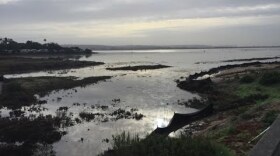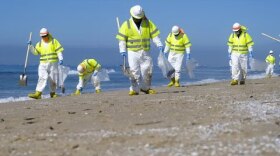For two decades, Margarita Garcia has been fighting to end pollution in her neighborhood.
The 82-year-old retired hairdresser has white-streaked hair and a love for cracking jokes. She lives on the west side of National City, where diesel trucks grumble through the streets every day, auto body shops squeeze between family homes and the thrum of the freeway vibrates the air.
That industrial presence has heavily polluted this neighborhood, according to state data. Ashen soot collects on the bars outside Garcia’s windows, and her air quality monitor often reports toxic particles outside. Garcia also has an irregular heartbeat and has survived an aneurysm, both which her family attributes to air pollution.
Twenty years ago, Garcia began working with the Environmental Health Coalition, a longtime environmental justice group based in National City. She and her neighbors pushed back against heavy industrial activities in the city.
Their efforts won support from National City officials, who placed an emergency halt on new industrial businesses around her neighborhood and pledged to eventually push existing ones elsewhere.
But environmental advocates worry some of those gains could be reversed this year, as National City considers the construction of a brand new biofuel transfer depot on the western side of the city. While biofuels are a cleaner alternative to gasoline and diesel, the industrial facility itself could bring more pollution to the area. The depot would rely on scores of diesel trucks rumbling through the city every day to transport the fuels.
USD Clean Fuels, the Houston-based company behind the depot, argues the facility would supply sorely needed alternative fuels to Southern California and support the state’s efforts to curb climate-warming emissions — efforts that have been severely weakened by the Trump administration.
A spokesperson for USD Clean Fuels declined an interview request from KPBS. In an emailed statement, company president Bob Copher said the terminal would support California’s goals to clean the air and slash climate-warming emissions.
“USD Clean Fuels is confident this project will be beneficial for National City, the greater San Diego area, and California,” Copher said.
But environmental advocates and state regulators say the depot would hurt the city’s efforts to curb pollution. They also questioned whether city officials have done enough to consider the cost to residents’ health.
"We've been trying to clean the city of pollution for a long time," Garcia said late last month while sitting at her dining room table. She spoke in Spanish through an Environmental Health Coalition interpreter. “We're almost there, and then something worse comes along.”
“No es justo,” she said. It’s not fair.
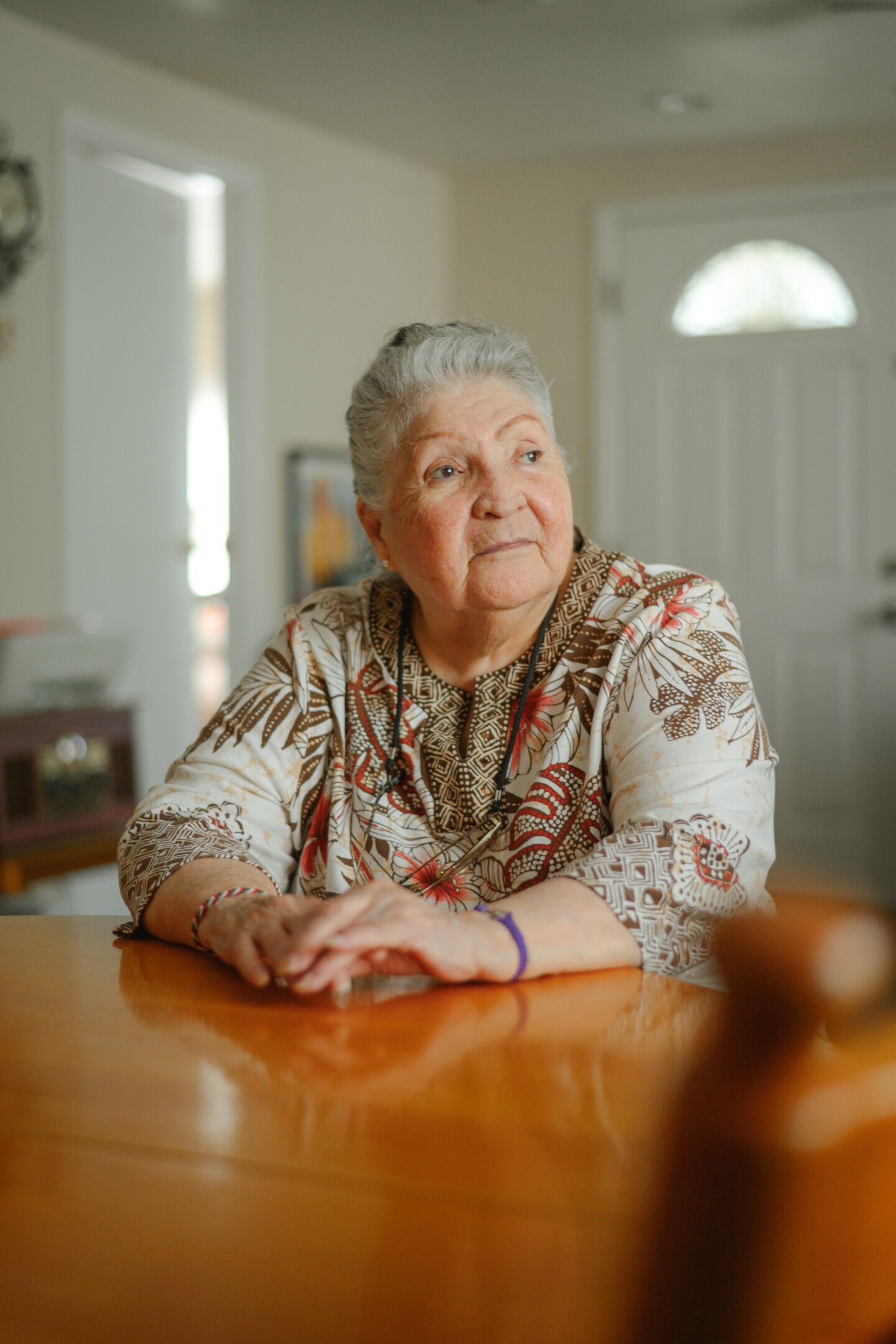
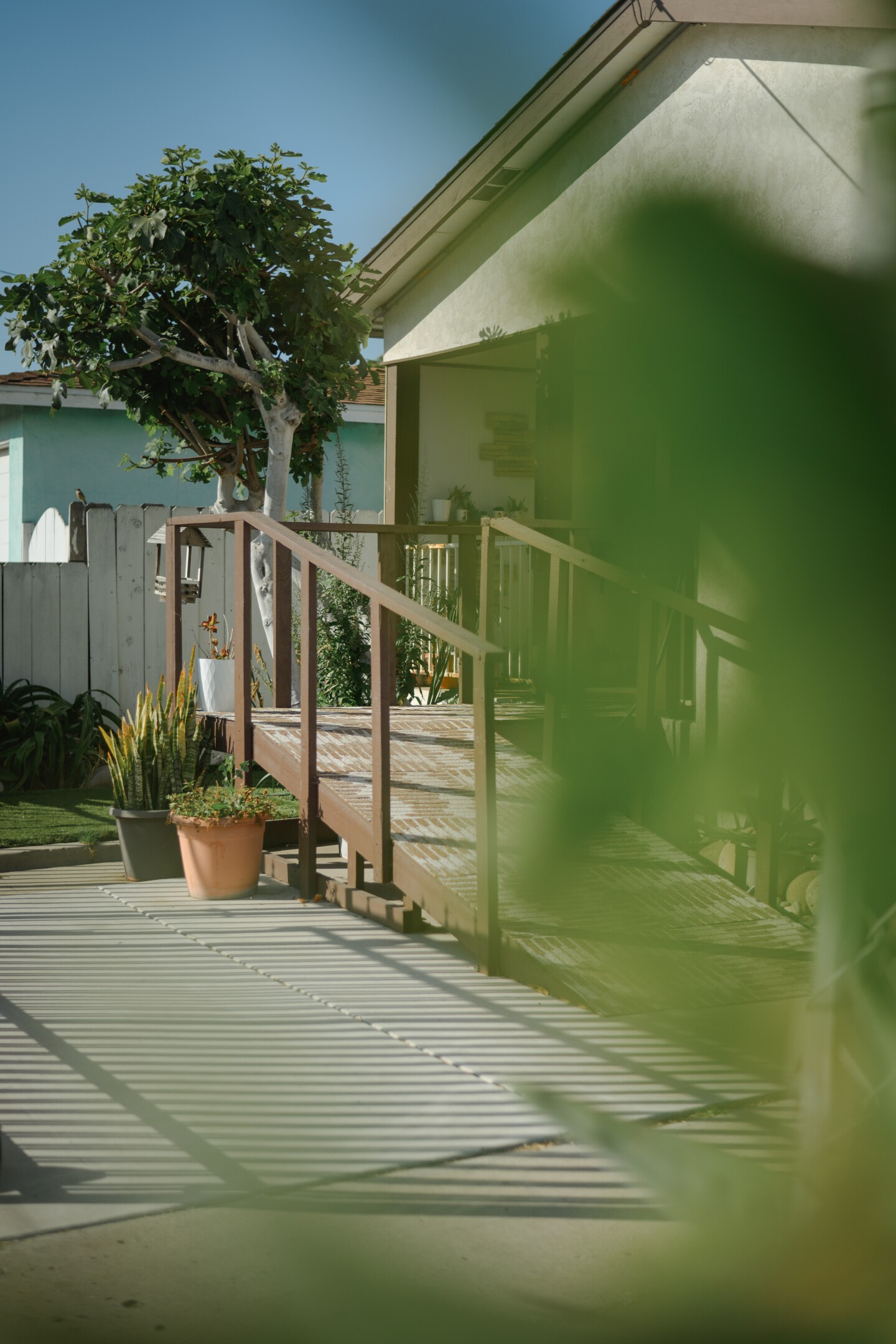
A pledge to curb pollution
Before the trucks and the auto body shops, West National City — also known as Old Town — was mostly made up of small, single-family homes. There were a few markets, some churches and an elementary school.
But that began to change as the Port of San Diego took shape.
In the late 1960s, in an effort to develop the city’s economy, National City officials opened up the west side of the city to small-scale manufacturing. The port opened a new marine cargo terminal along the city’s bayfront, which now processes a tenth of all cars imported into the United States.
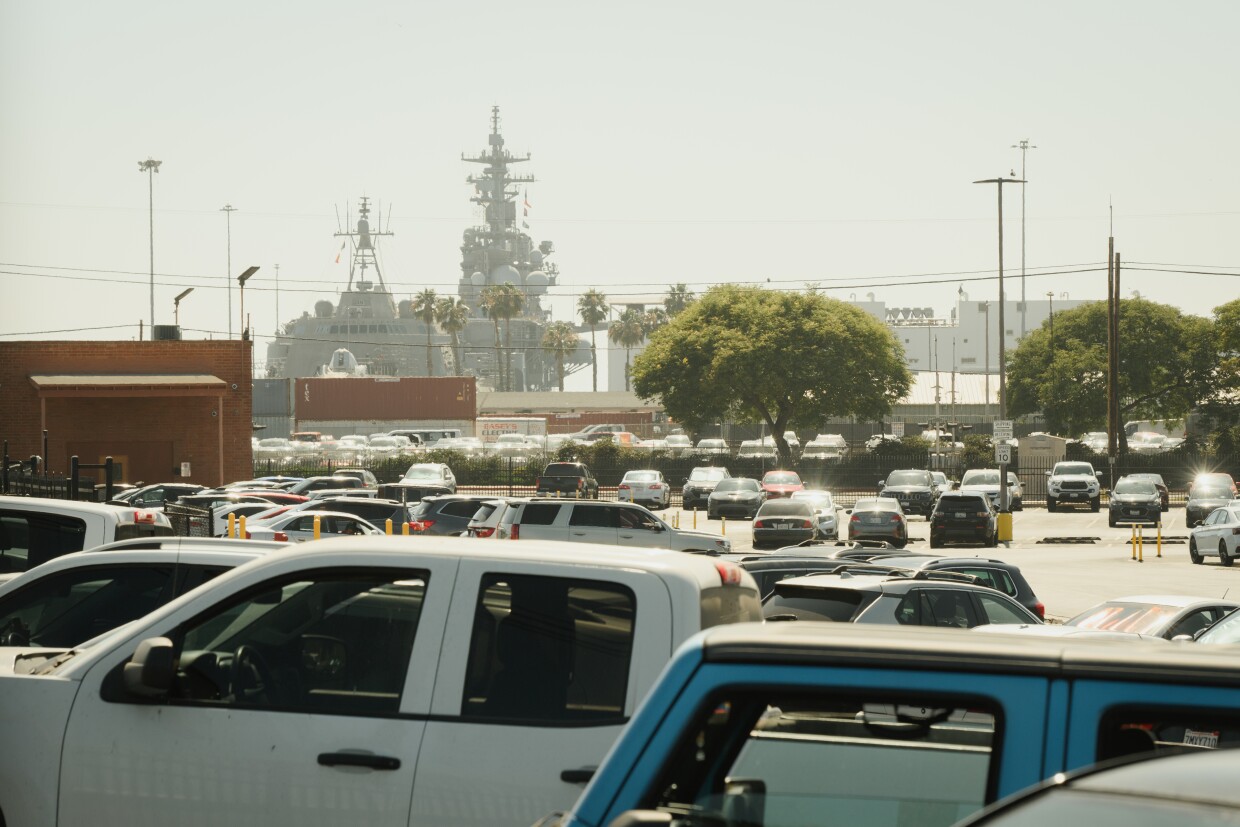
Auto repair and body shops set up operations between the neighborhood’s homes. Metalworking businesses and warehouses moved into the area too. Those changes brought new money and work to the area, but they also clouded the air with pollution.
Today, West National City sees more diesel particulate matter — tiny particles that can burrow into the lungs and bloodstream — than over 90% of California, according to state data. In past years, children there have visited the hospital for asthma-related emergencies at some of the highest rates in the county.
The city is also the least wealthy — and one of the most racially diverse — in San Diego County, making it one of the many places across the U.S. where pollution is concentrated in communities of color and poor neighborhoods. A quarter of the city’s residents live below the federal poverty line. Two thirds identify as Latino, and a fifth as Asian American or Pacific Islander.
In the late 1990s, Garcia moved to National City from Los Angeles with her late husband. It was a more affordable place to live, one with kind neighbors who looked out for each other. They purchased a small trio of units on Coolidge Avenue, across the street from a noisy auto body shop that smelled like paint.
They noticed the pollution almost immediately. To Garcia, it felt like industrial businesses could foul the air and get away with it because they were in poor, majority-Latino neighborhoods. Her husband used to say that companies treated the city like a dumpster.
Maggie Morales, Garcia’s daughter, was also frustrated by the conditions. Morales now lives in Chula Vista, but she often makes trips to National City to do her shopping and spend time with her mother.
“It should be (that) we can open our windows, open the doors, and have a fresh breeze because we’re so close to the coast, instead of having to breathe the contaminants,” Morales said.
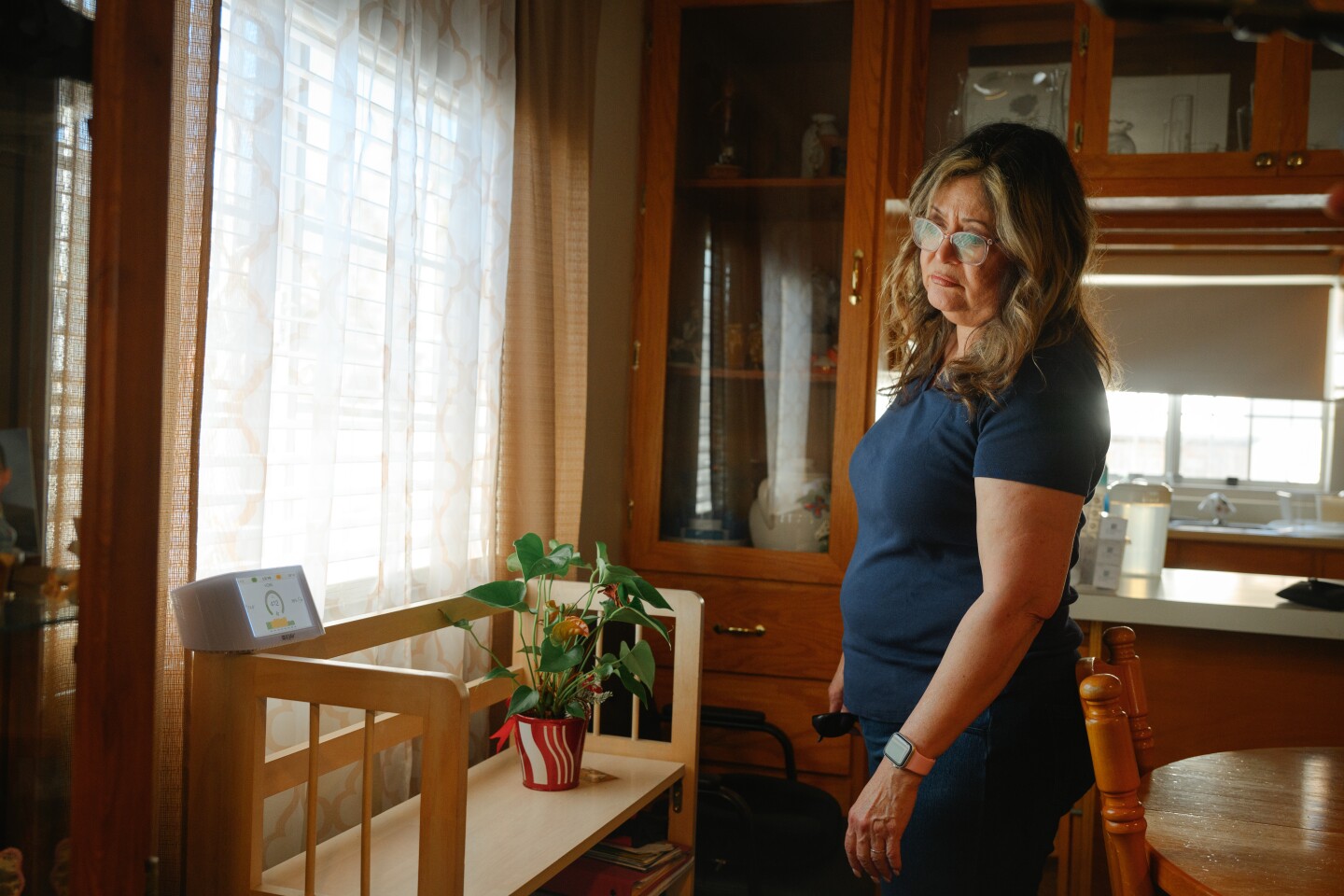
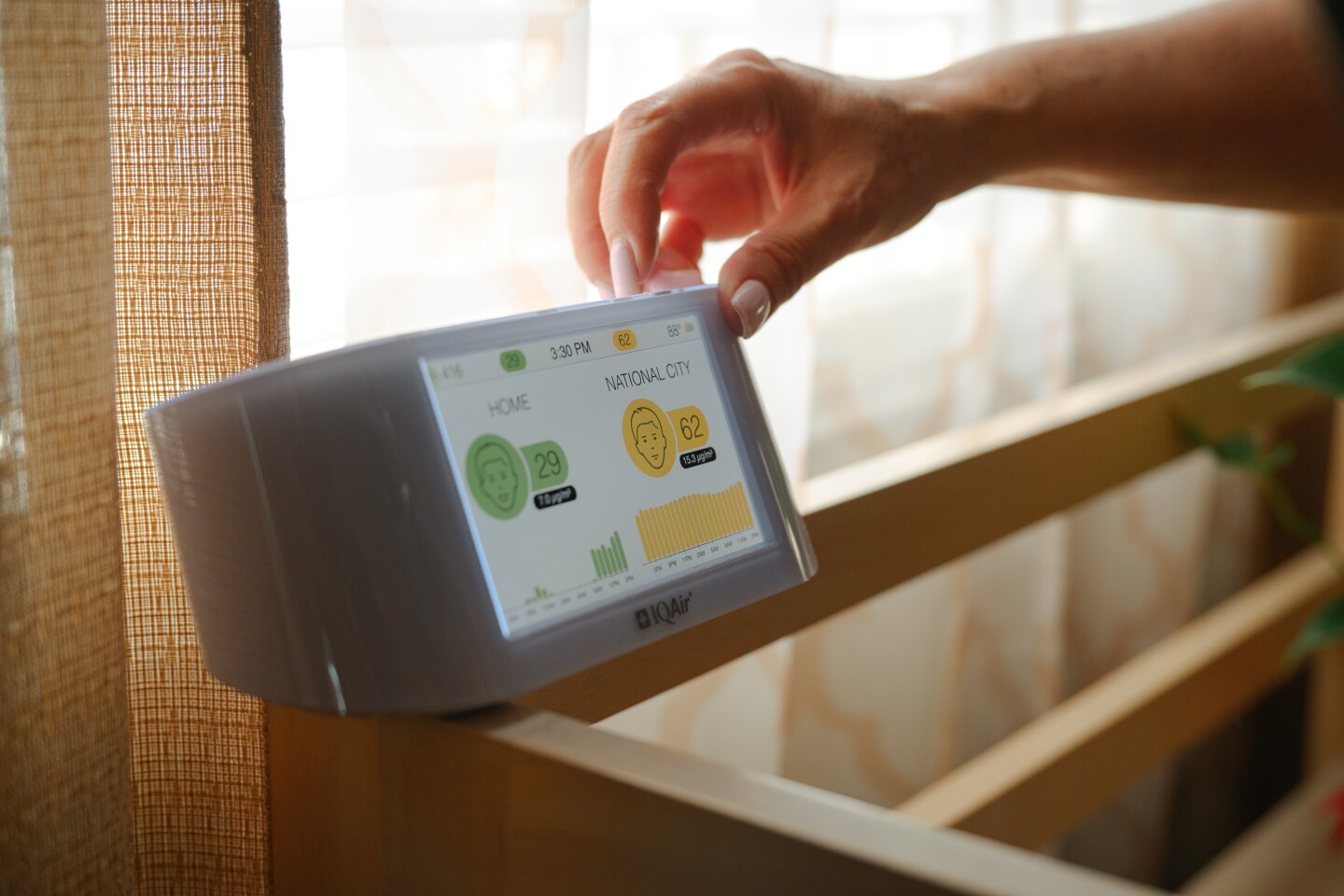
When Garcia joined up with the Environmental Health Coalition, the organization had already been working for decades to curb pollution in the South Bay — especially in poorer neighborhoods and communities of color. She and other volunteers spoke to their neighbors about how to clean with nontoxic chemicals and report businesses that violated environmental rules.
Slowly, city officials began clamping down on industrial businesses on the west side.
In 2010, the city created the Westside Specific Plan, an ambitious pledge to undo the damage of past zoning decisions and slowly untangle those businesses from the neighborhood. So far, at least two auto body shops have moved out and have not returned.
State regulators also took notice. In 2018, the California Air Resources Board recognized West National City and several other San Diego neighborhoods as environmental justice communities. The state dedicated millions of dollars to reduce air pollution in those areas.
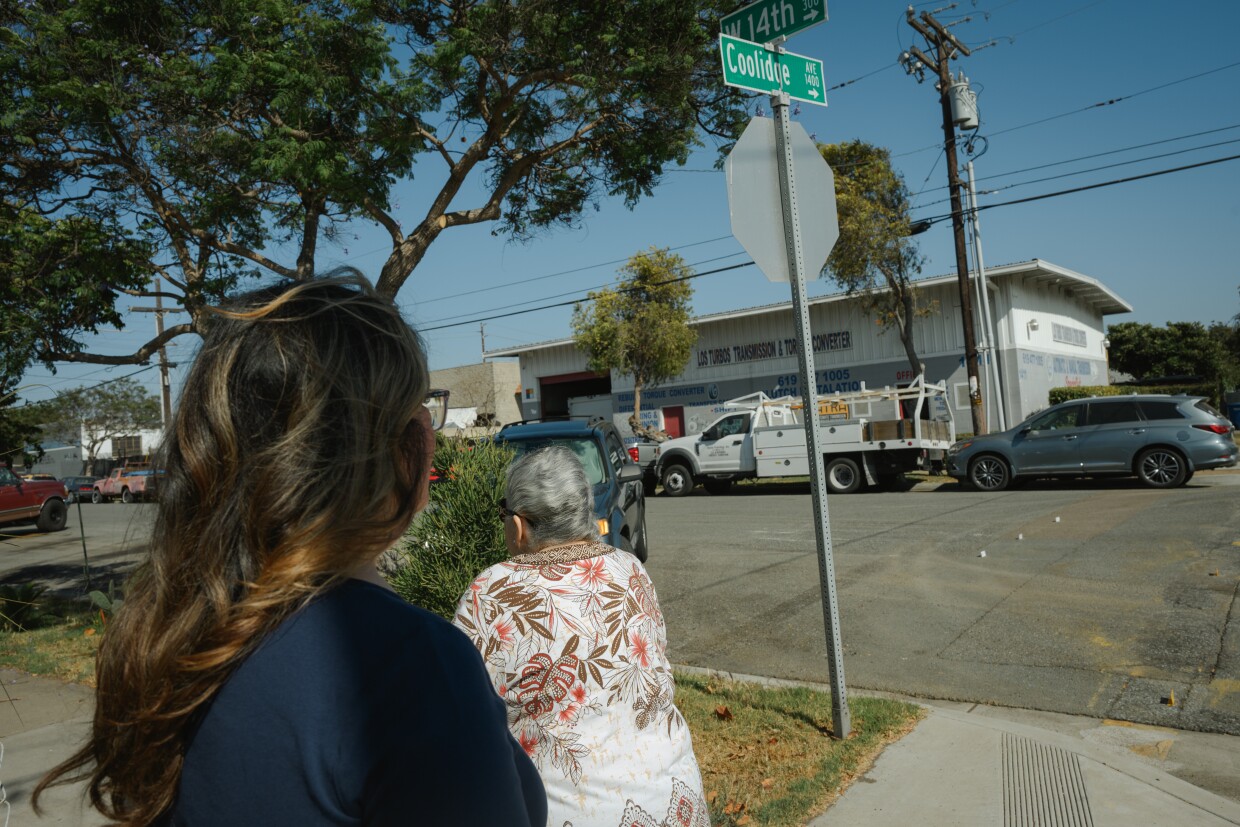
A new fuel terminal
In 2023, USD Clean Fuels announced plans to build a new biofuels terminal in National City.
Biofuels are cleaner replacements for petroleum-based fuels such as gasoline and diesel. They’re made from sources like vegetable oils, algae and recycled restaurant grease. The fuels are designed to reduce dependence on petroleum options.
Burning biofuels instead of petroleum can reduce climate-warming emissions by as much as 74%, according to the U.S. Department of Energy. But producing it at a large-scale is costly and it can’t completely replace fuel in all diesel-powered vehicles.
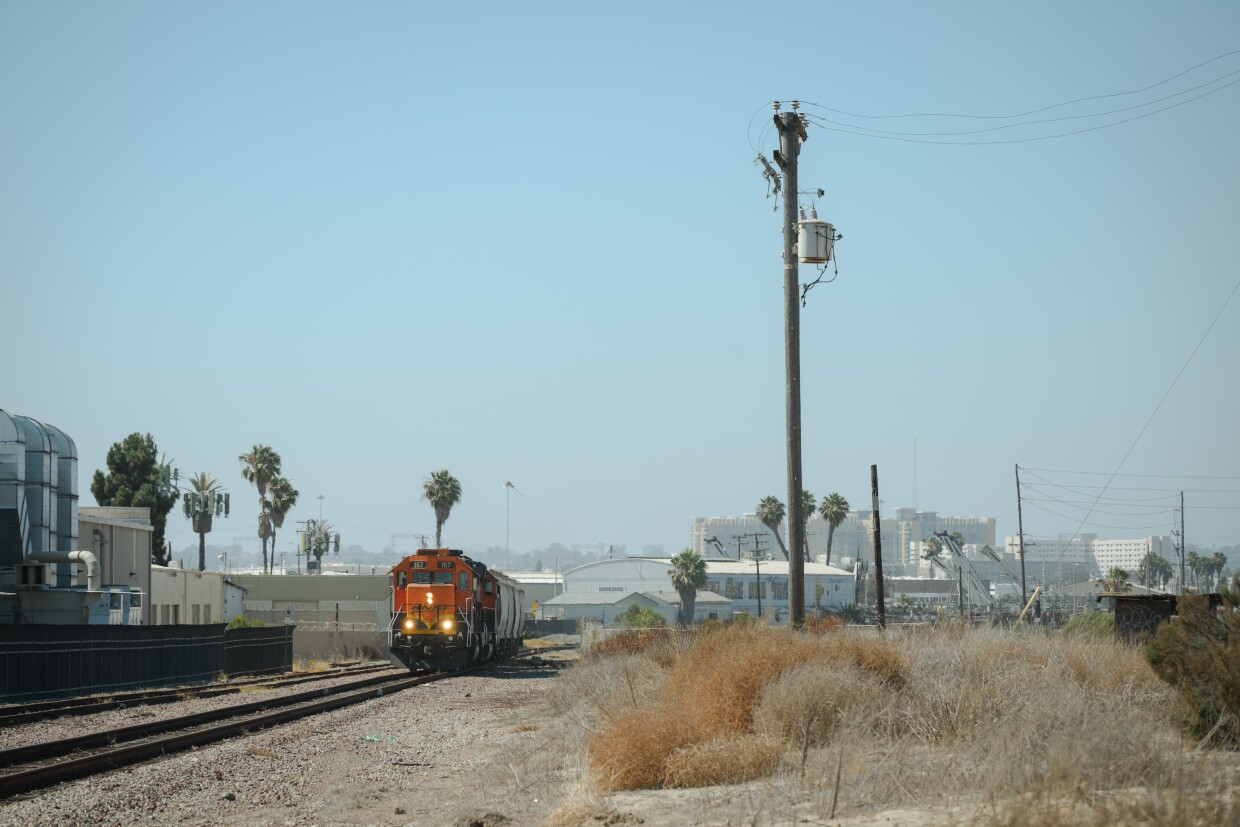
The proposed terminal would be built along the railroad tracks near the corner of Cleveland Avenue and West 19th Street. It would receive tens of thousands of gallons of biofuels every day. Workers at the facility would offload the fuel from train cars to heavy diesel trucks. The trucks would deliver the fuel to industrial customers throughout the San Diego metro area.
USD Clean Fuels also agreed to pay the city a yearly community benefit fee of $200,000. City staffers said the money could go towards National City’s free electric shuttle program or reducing industrial businesses on the west side.
But for José Franco Garcia, executive director of the Environmental Health Coalition, the project raises serious warning signs. (He is not related to Margarita Garcia.)
For one, the terminal would bring more than 70 additional heavy diesel trucks to the city every day, according to the city’s environmental analysis. USD Clean Fuels originally proposed more than 100 trucks but scaled back their plans during the environmental review.
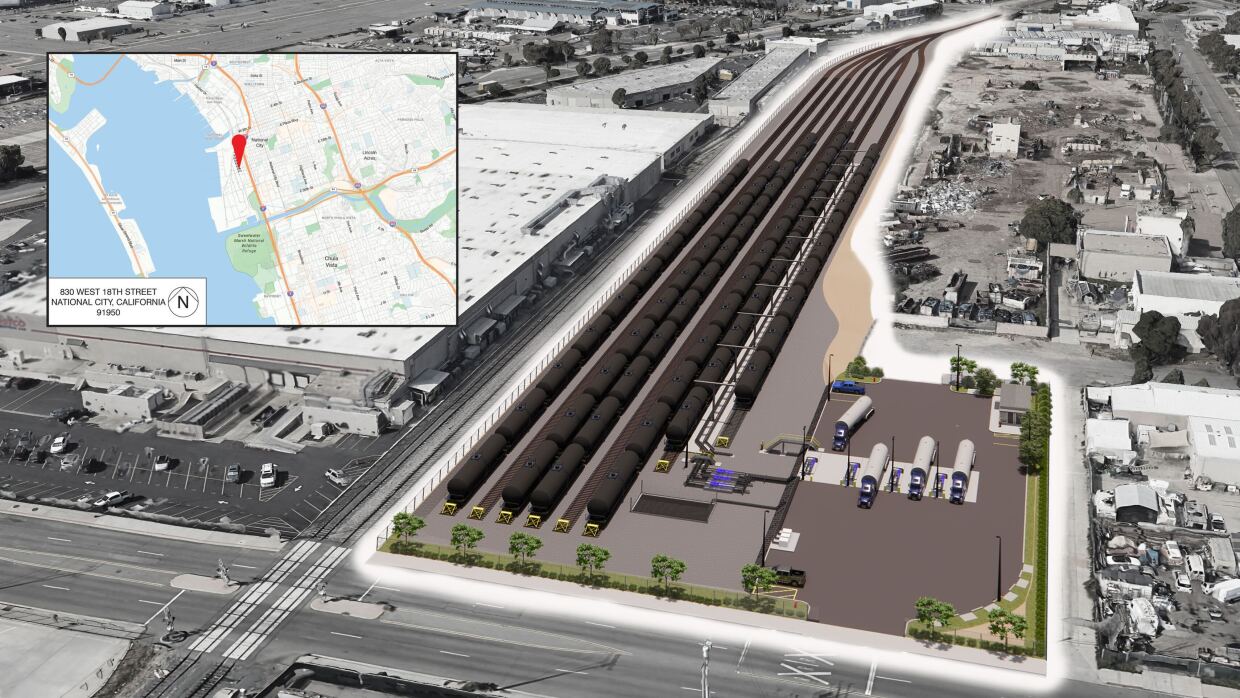
For another, the terminal would be located on the already-polluted western side of the city, a few hundred feet from a neighboring apartment complex and half-a-mile from Kimball Elementary School.
“We've been working in National City for a couple decades now trying to reduce the impacts,” José Franco Garcia said. “If this gets approved, this would be a step backwards.”
He is also concerned about the possibility of an accident at the depot, a fear that residents have raised too. He recalled when a Navy ship at the Port of San Diego caught fire in 2020, sending acrid smoke billowing through the city.
“When they're asking what happens if there's an explosion, they want to see a plan,” he said.
USD Clean Fuels is preparing for those scenarios. In planning documents, city staff said the company would install a massive concrete containment basin beneath the terminal to capture any spilled fuels. They said the company would also install additional firefighting equipment.
Earlier this year, officials in Eugene, Oregon, rejected USD Clean Fuel’s proposal for a similar project after residents of the poorer, mostly white neighborhood of Trainsong said they also feared an environmental disaster.
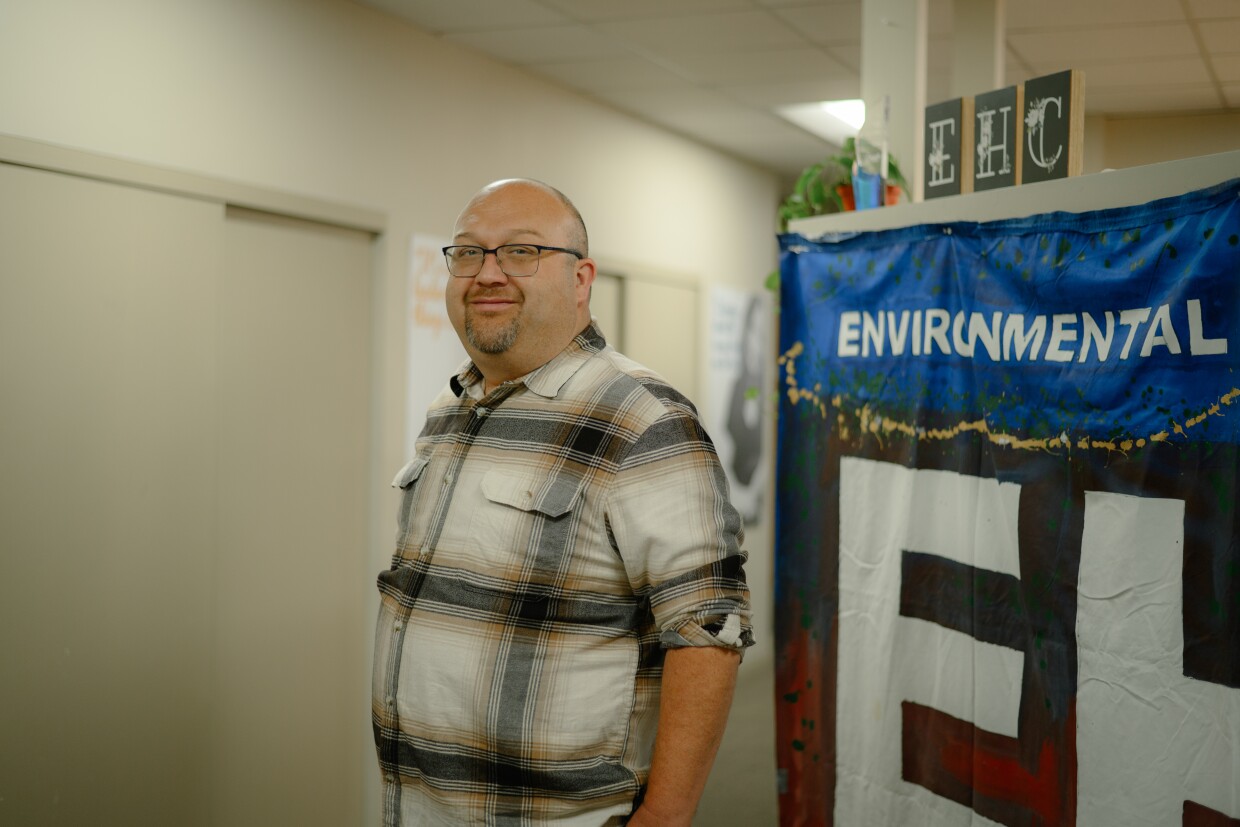
State regulators intervene
Until last month, National City officials appeared to be clearing the way for the terminal.
In a draft environmental analysis of the project, city staff acknowledged some significant concerns, particularly around climate-warming emissions. The trains and diesel trucks needed to transport the fuel, the draft analysis said, would produce more than 1,600 tons of greenhouse gases annually — the yearly equivalent of roughly 350 passenger cars. The analysis acknowledged that the project wasn’t in line with the city’s goals of reducing emissions.
Still, city staffers recommended moving the project forward. They said the project would not have any significant effects on the environment if the company took steps to offset the production of greenhouse gases. They also said it would not significantly add to health risks in neighboring residential communities or interfere with bike paths nearby.
Last month, however, two state regulators intervened as the city’s Planning Commission prepared to hold a public hearing on the project.
In a letter to National City, the California Coastal Commission said the city’s analysis of the air pollution was “inadequate.” It said city staff were using some data tools that were outdated and others that didn’t distinguish between the east and west sides of the city.
The California Air Resources Board also sent a letter, arguing city officials likely underestimated the total amount of diesel pollution. The board urged National City to require the use of electric trains and trucks to transport the fuel.
Because the Coastal Commission sent in its letter at the last moment, the Planning Commission postponed its vote on whether to advance the project.
The Planning Commission is expected to hold the new hearing in the coming weeks.
National City Councilmember Luz Molina, whose district includes the proposed terminal site, declined an interview request. In an emailed statement, she encouraged all residents to “stay engaged in this process, and to make their voices heard.”
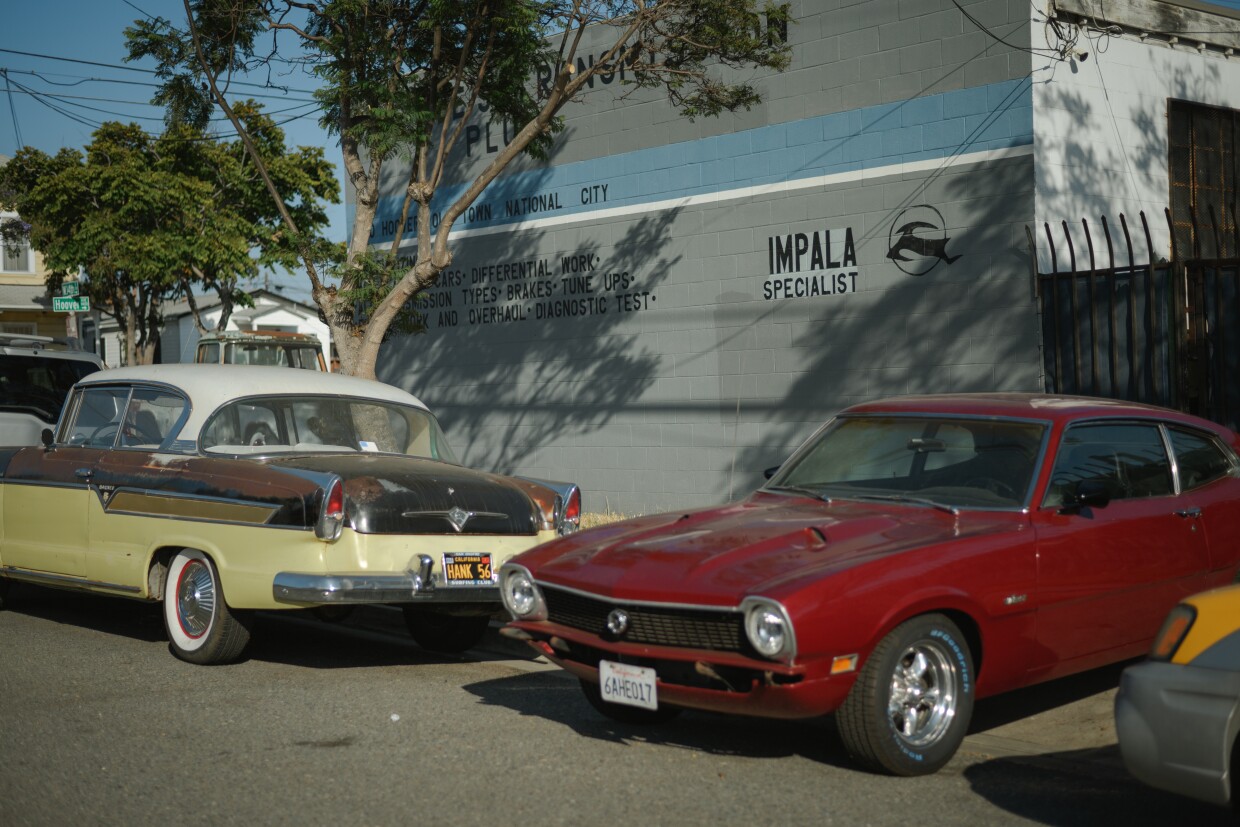
A fragile moment
The debate over the USD Clean Fuels depot comes at a tenuous moment for California’s climate goals and for environmental justice efforts nationwide.
Over the last few years, California has undertaken what would be a transformational effort to reduce emissions and clean the air. In National City today, tiny electric shuttles zip around the city as part of a free rideshare program funded by the Port of San Diego and state climate initiatives. Developers are working on a zero-emissions truckstop, which could be a major hub for electric trucks.
The state’s efforts would have eventually pushed industrial facilities — like the proposed USD Clean Fuels terminal — to electrify their fleets, cleaning up pollution in the long-term.
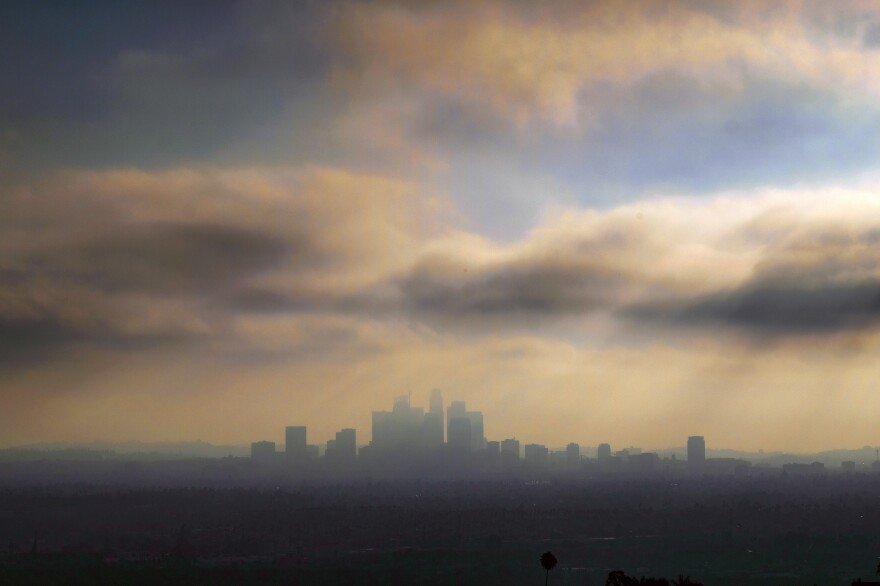
But since taking office in January, President Donald Trump has severely weakened California’s plans — especially its electric vehicle mandates. The U.S. Environmental Protection Agency has also taken an ax to grants for environmental justice programs administered by environmental organizations. The programs aimed to address the disproportionate pollution impacts on communities of color and poorer neighborhoods.
In San Diego County, those funding cuts have forced the Environmental Health Coalition and other advocacy groups to scale back staff and programming. The cuts are now facing legal challenges in federal court.
José Franco Garcia with the Environmental Health Coalition acknowledged that it was a challenging time for the organization. But he said it made him happy to see residents like Margarita Garcia carrying on West National City’s tradition of working together to make their voices heard.
“It is a coalition,” he said. “It is different folks that are standing up for this.”
On a walk around the neighborhood earlier this month, Margarita Garcia said she was glad to be part of the organization as well. She pointed out small things that she said have changed for the better. The paint-smelling auto body shop that used to sit across the street from her house has since moved out. The Environmental Health Coalition has also helped her install a new electric stove and solar panels.
Most importantly, Margarita Garcia said, being part of the group has given her the power to learn about things going well and things going wrong in her neighborhood.
“Pues ahí seguiré aprendiendo,” she said. I will keep learning.



